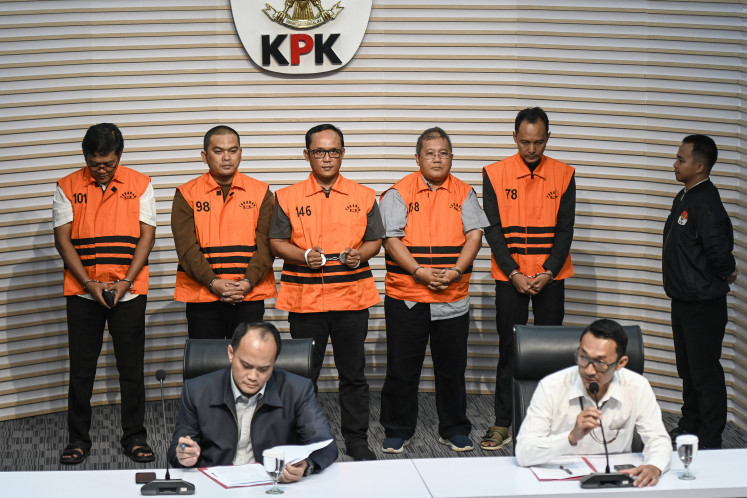Popular Reads
Top Results
Can't find what you're looking for?
View all search resultsPopular Reads
Top Results
Can't find what you're looking for?
View all search resultsBetween miscommunication and Christianization phobia
In many cases, differences are politicized, with those in power, whether through religious, political, or social majorities, feeling threatened by the presence of minority groups.
Change text size
Gift Premium Articles
to Anyone
A
video of a middle-aged woman angrily confronting her Christian pastor neighbor went viral on Sept. 29. The woman, identified as a third echelon official in the Bekasi city government, said her neighbor did not have permission to organize religious services in their home. The public has responded to the incident on social media, saying that the woman should have been more tolerant.
Among the reactions, some pointed out the irony of the situation, considering that Bekasi has consistently ranked in the top 10 in the Setara Institute’s research on tolerance. In fact, Setara listed Bekasi as the second-most tolerant city in Indonesia after Singkawang in February of this year. This incident highlights the gap between formal indicators of tolerance and the social realities that are often marked by religious tensions.
Last year, a group of people in Parepare, South Sulawesi, protested the construction of a Christian school, arguing that it was being built in a predominantly Muslim neighborhood. While the Bekasi incident ended amicably, with both parties apologizing and forgiving each other, the situation in Parepare took a different turn.
The regional legislative council (DPRD) recommended halting the school’s construction, despite the project having been approved by the city government. The contrasting outcomes of these two events illustrate the complexities of tolerance issues in Indonesia, where peaceful resolutions can be harder to achieve when local public and political pressures come into play.
Cases like these highlight the complexity of tolerance. It is not a black and white issue. There are many nuances in how we understand and practice tolerance, especially when considering the roles of power and personal disapproval. Not all acceptance is tolerance, and not all disagreements are forms of intolerance.
One of the factors exacerbating tensions between religious groups is miscommunication or even misunderstanding. Many religious conflicts do not stem from ill intentions, but from fear rooted in ignorance about other people’s beliefs. This fear is often reinforced by narratives spread through biased media or social media, where minorities are depicted as a threat to the majority’s dominance.
This phenomenon is frequently referred to as Christianization phobia, the fear that Christian religious activities in Muslim majority areas aim to convert local residents. Although this concern lacks substantial evidence, the narrative persists in many incidents like those in Bekasi and Parepare. It is further fueled by historical experiences of colonialism and Christian missionary activities, although the context has significantly changed in the modern era.



















